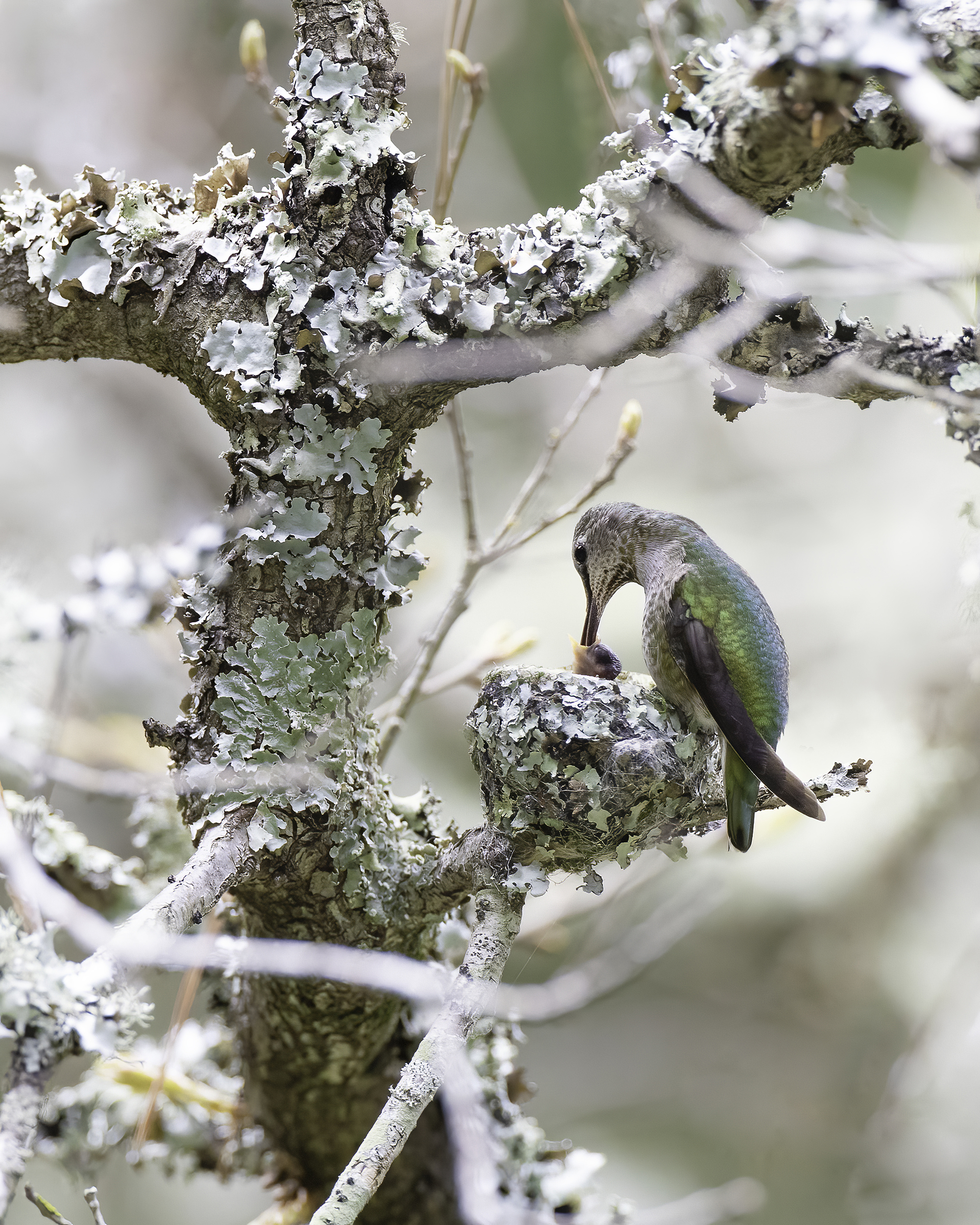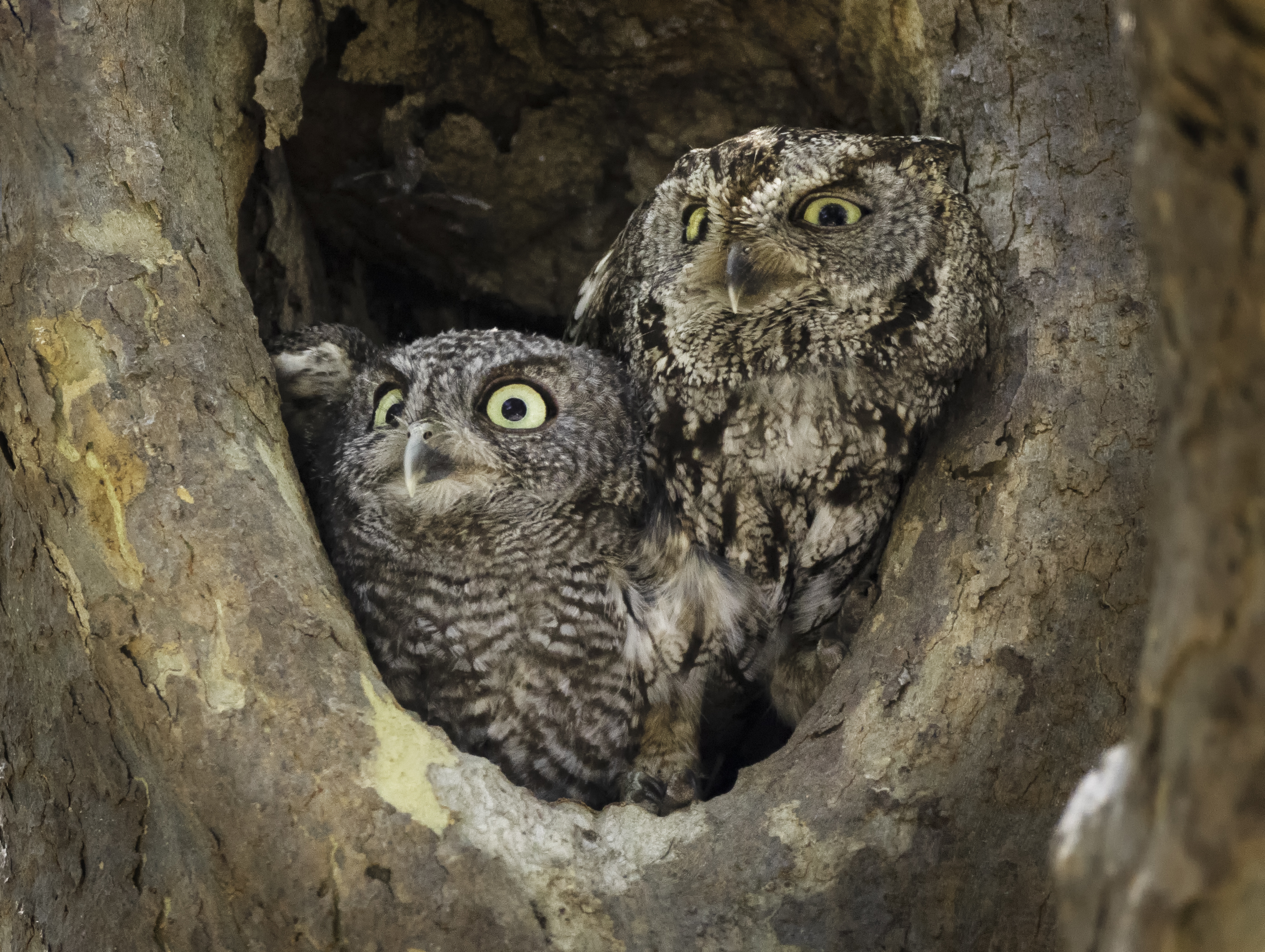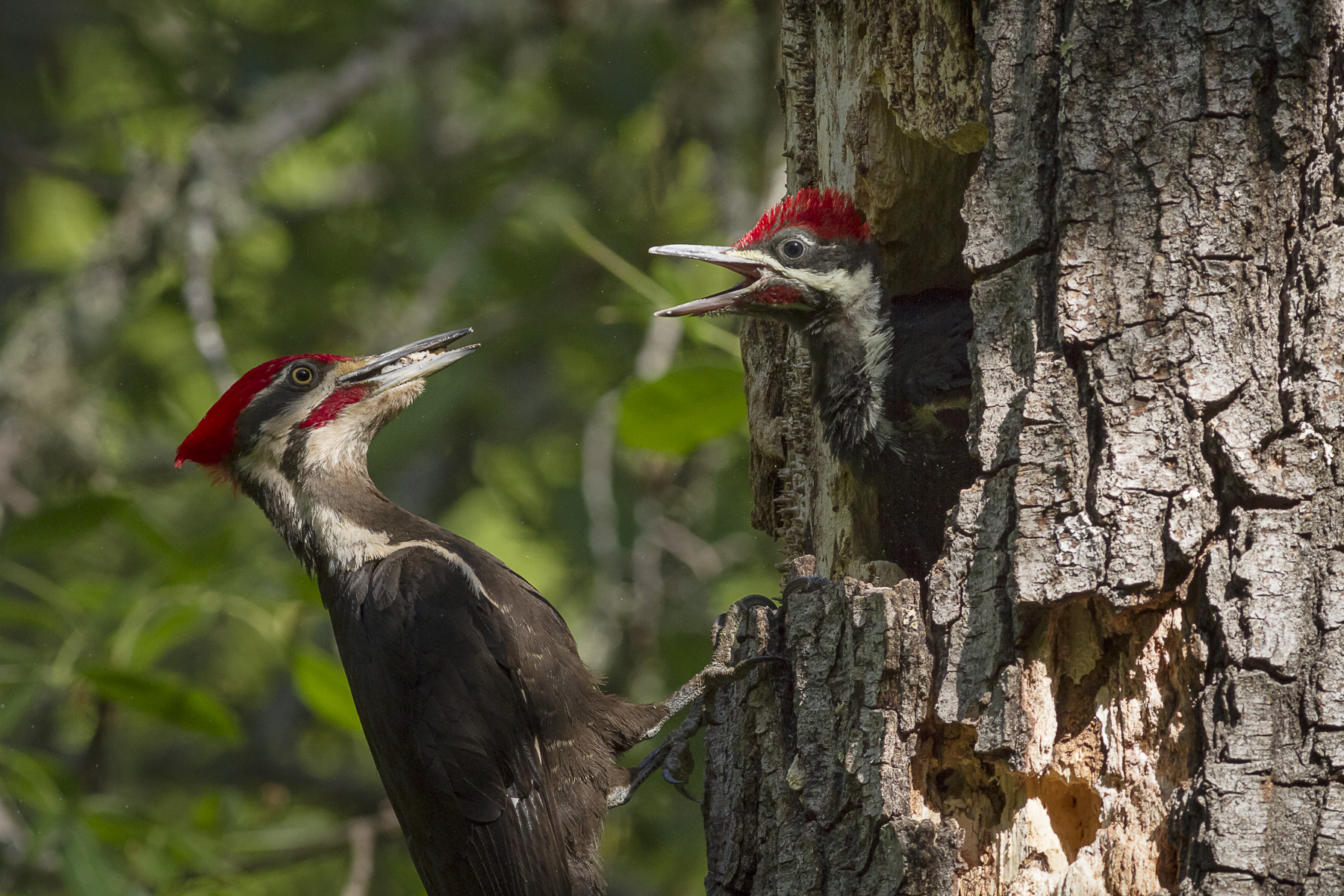
Female Anna’s Hummingbird & Hatchling – by Elyse Omernick
Welcome to the Marin County Breeding Bird Atlas 2
The Breeding Bird Atlas is a four-year project that will map the distribution of birds that nest in Marin County. This project is actually a continuation of the long-term survey begun in the 1970s by Bob Stewart and Dave Shuford. Over four field seasons, Stewart and Shuford supervised scores of volunteers to gather data on the basis of a grid system overlaid onto topographic maps of Marin County. Their field work culminated in the publication of Shuford’s landmark Marin County Breeding Bird Atlas. The main goal of this second Atlas (MCBBA2) is to determine the current distribution and composition of breeding birds, four decades later.
We are currently three years into this 4+ year effort, initiated in 2021, and 2024 will mark the 4th season. While we are largely replicating the field methods used by our predecessors 40 years ago, certain innovations have been introduced by GIS mapping technology, data storage infrastructure, and some changes to the field methods.
New information will be added to this page regularly, so please check back often! Regular updates and project progress are also sent via MailChimp so please be sure to SIGN UP for our email updates HERE
MCBBA2 Annual Report
The MCBBA2’s third annual report, for the 2023 season, is now available HERE. Check it out! It summarizes our preliminary findings through the first three seasons, and the next steps for the project, including how others may help. You can also read our reports from the 2021 season and from the 2022 season. We thank our amazing volunteers and supporters, and the ongoing support from Marin Audubon for making this possible.
MCBBA2 Data Explorer
Volunteers, and those interested in digging further into our preliminary results, please look for additional resources (protocols, forms, species lists, maps) in the Data Explorer section of this webpage HERE.
Marin County Breeding Bird Atlas 2 – Frequently Asked Questions
What is a breeding bird atlas?
A breeding bird atlas is essentially a stack of maps that show the geographical distribution of birds that are nesting in a given area. An atlas project sets out to gather data for such maps within a set study period. Breeding behavior and its distribution across this area can be tracked over time, related to habitat features, and quantified in various ways. A work like this is based on a body of data that is accumulated over several years of field work.
How can I donate to support the Marin County Breeding Bird Atlas?
We are so grateful for all the volunteers that make this project a success. Even with all this generous volunteer support, we also have a number of expenses that we have to fundraise to cover to ensure the success of this endeavor. To that end, we are actively seeking donations to help support the Atlas. If you are interested in contributing a tax-deductible donation – any amount helps! – Please donate by PayPal or send a check made out to the “Marin County Breeding Bird Atlas”, ℅ Daphne Hatch, 67 Pinheiro Circle, Novato CA 94945. Or please contact Daphne at if you are considering a donation through a donor-advised fund. MAS is the fiscal sponsor of MCBBA2.
Who leads this effort?
This project is overseen by a Steering Committee that includes the three-member MCBBA2 project coordination team (listed in the Contact Us section of this webpage) and three Marin Audubon Society members (Barbara Salzman, Doug Waterman, and Martha Jarocki). The three MCBBA2 volunteer team members coordinate the project, and with the help of a part-time Project Manager from Point Blue Conservation Science, Hilary Allen. In addition, other volunteers graciously help with various roles, including Susan Kelly as our Volunteer Coordinator. A GIS specialist, Will Wiskes, assists with geospatial data and created and curates the MCBBA2 Data Explorer found HERE. We may have the need for more volunteer help (in the following categories: volunteer engagement, data management, and fundraising) – reach out if interested! We are deeply grateful to former Steering Committee member and Regional Coordinator Joan Lamphier (1942-2022), who we lost unexpectedly, for her countless contributions. We will all miss her and her wonderful spirit.
How long will this project take?
The field work will be conducted during the breeding seasons of four consecutive years: 2021-2024, with the possibility of running a fifth survey season, should there be unacceptable gaps in our data. Production of the summary Atlas will go beyond 2024.
Will you survey the county all at once?
In order to survey the county in a systematic way, a grid system has been overlaid onto topographic maps of Marin County. This grid system results in 221 cells, or ‘study blocks’, each of which will eventually be surveyed by one or more volunteers. Over four years, the goal is to achieve adequate coverage as defined ahead of time. So, the survey will not take place county-wide simultaneously; however, at any given time during the next four breeding seasons, a significant proportion of blocks will be surveyed.
Who provides these observations?
Most observations will be provided by ‘Block Leaders’; that is, skilled volunteers who take responsibility for the field work, data collection, data entry, and data proofing for their adopted block (or blocks). Those who would like to survey but cannot take on the responsibilities of a Block Leader are still welcome to add their findings as ‘Additional Observers’. Certain data from existing, specialized bird surveys conducted by field biologists will be incorporated.
May I volunteer as a Block Leader?
Skilled birders who can commit their time and energy are welcomed! The atlas project has already signed up dozens of highly skilled observers – but more are needed. If you are good birding by ear or eager to perfect this skill; if you can readily identify our county’s birds of late spring and summer; if you are a patient observer who is willing to take on the responsibilities of a volunteer including, recording your field data and entering it online, then then contact us at
What time commitment is required?
Block Leaders are asked for a minimum commitment of 16 well-distributed hours per block, across April 15 to July 15 which is the official atlas breeding season.
I see birds nesting in my backyard or on my walks. How may I report these?
Anyone can contribute data on breeding birds. While you may do so by using eBird, a citizen science database with desktop and phone applications and a great place to capture such data in general, we will not be incorporating eBird data into the Atlas (or only very minimally). For your data to contribute directly to this project, please fill out the MCBBA2 Incidental Breeding Behavior web form, which can be quickly referenced in the third gray panel titled “Submitting your Data and Observations”, to provide reports of specific observations by location, species, and date.
I am a landowner / manager, and I’m willing to have birders come and survey my property. How can I get in touch?
It is best to get in touch with Liz Lewis, one of our Project Coordinators (), who is helping coordinate some of the private land access for this project. The Breeding Bird Atlas staff and volunteers are committed to mutually beneficial collaborations with Marin’s farm and ranch owners, as well as managers of major properties.
Are there other ways to help, such as data proofing or other clerical needs?
Help like that can be used! Please contact the Project Coordinators at
My son/daughter is interested in birding. Can they participate?
How they can help with the project depends on their skills. If you’re not sure, email us at:
When during the year do surveys take place?
To try to focus on the peak breeding period, and avoid periods where there are lots of migrants or when breeding is scarce, the official Atlas field season is April 15 to July 15. The atlas staff will accept some breeding records before and after these dates, which are to be provided via the Incidental Breeding Behavior web form, which can be quickly referenced in the third gray panel titled “Submitting Your Data & Observations”.
Will the Atlas publish the location of nests?
No, exact nest locations will not be published. The published maps will relate solid breeding evidence only to the atlas study blocks, which average about 1500 acres. This project’s prime mission is bird conservation; for this reason, the protection of our species is prioritized.
Juvenile & Female Western Screech Owl – by Elyse Omernick
Please Contact Us!
Please check back here regularly, as this section is subject to change.
Prospective volunteers: please email . We hope to hear from you about ways you can potentially be involved!
Volunteers already accepted into the project who have questions about getting setup for the season or on a new block should contact our Volunteer Coordinator, Susan Kelly: (new position in 2023!). We no longer have regional coordinators like in 2021-2022.
MCBBA2 Steering Committee Members (Project Coordinators)
Contact any/all of us, or the email address, if you have any questions about the project:
Daphne Hatch:
Diana Humple:
Liz Lewis: New 2023!
Project Manager: The Project Manager is available to answer most inquiries during the survey season and will be in touch about data. Block Leaders, Additional Observers, and Incidental Observers should reach out to the Project Manager with questions about protocols, processes, and natural history. Please contact Hilary Allen: .
Protocols and Instructions for Volunteers
Block Leaders and Additional Observers are directed to the MCBBA2 Data Explorer (on bottom of this webpage, or click HERE) > More Resources > Handbook & Instructions for the Volunteer Handbook, field form, and the other resources they will need. Some of the handbook is reproduced in separate PDFs. If you do not locate information that you need, please get in touch with one of the Volunteer Coordinators. A few tutorial type resources can be found in the “Webinars & Videos” panel.
Submitting your Data and Observations
Official Atlas Surveys
Block leaders: for instructions on how to collect your data and submit your data, please see the MCBBA2 Data Explorer (bottom of this webpage) > More Resources > Handbook & Instructions section.
Observations Outside of Official Surveys: The Incidental Breeding Observations Webform
Members of the public and block leaders: Use this online incidental data entry portal to submit confirmed and highly-probable evidence of breeding that falls outside of official block surveys that either:
– Are observed by birders, any members of the public, and any interested contributors to the Atlas (other than block leaders), any time and anywhere in Marin County
– Are observed by block leaders (1) outside of the April 15 – July 15 Atlas period, or (2) incidentally in any blocks outside any official survey.
Webinars & Videos
We are delighted to share three webinar recordings that coincide with our Breeding Bird Atlas efforts. Please click the links below to watch each recording. Enjoy!
GIS Conservation – The Breeding Birds of Marin County – by William Wiskes
Marin’s Breeding Birds (How We Know What We Know) – by Dave DeSante
New Breeding Bird Atlas – by Juan Garcia
Bird Vocalizations & Breeding Evidence Video – Denise Wight
Adult & Juvenile Pileated Woodpecker – by Sylvia Hunt
MCBBA2 Data Explorer
By William Wiskes – GIS Analyst
Look here for protocols & survey forms, project maps, lists of breeding species from the historic atlas compared to preliminary lists from this one, and progress updates. Like the name says: explore, and you’ll find all sorts of resources!

